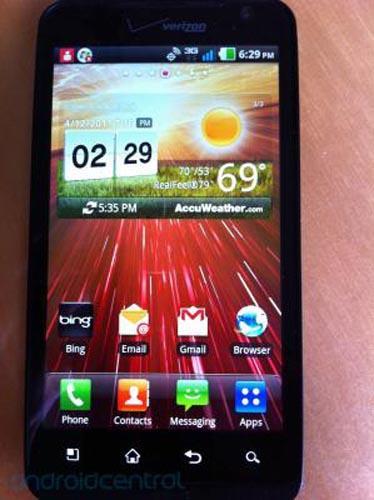
By now, the $299.99 price tag for certain devices on Verizon’s network isn’t a shock, especially after seeing some “lesser-equipped” devices running for nearly the same price. But, while it may be normal to see a price that high for the DROID brand name, we know that we’re really getting that $100 (or so) increase in price not just because of the name, but due to the technology inside the device. In particular, we’re talking about the LG Revolution (which isn’t a DROID-branded device) and the Samsung DROID Charge. Both of these devices will run a customer who’s qualified to upgrade, along with a new customer, $299.99 to start up service and walk out of the story with the phone in their hand. But, should folks have to pay for a feature they can’t use where they live?
Paying for features we don’t use comes with the territory. Considering how much our phones can do at any given moment, there’s probably days where we don’t use one feature, or even a handful of them. It happens. But, these features are considered pretty standard, like WiFI or Bluetooth, or even the GPS-connectivity. These may be things some folks don’t use, but these are the features that are expected to be in a device, so paying “extra” for them isn’t really the case anymore. However, 4G LTE is definitely something that we can consider “extra.”
Why? Because it isn’t the standard yet. Yes, Verizon is trying very hard to get 4G out to everybody, and so far they are doing a very good job of rolling out their advanced network. But, as it stands right now, the 4G blanket isn’t keeping everyone warm. Specifically, it isn’t keeping everyone warm who has access to these 4G-enabled phones. And what’s worse, is that these 4G-enabled phones are worthwhile even without the 4G LTE feature. Specifically, the LG Revolution’s specifications make it a high-end device that an Android fan, or even someone who just wants a thin phone with a large touchscreen display and impressive internals, would gladly pick up. The same goes for the Samsung DROID Charge. That 4.3-inch Super AMOLED Plus display and 32GB of available memory makes it a worthwhile device. It isn’t like 4G is making or breaking these handsets. No, they’re impressive by themselves, so having 4G-connectivity is just a bonus.
A bonus that someone may never use, even if they do pick up the phone. Now, I know that this is where the Verizon employee (or someone selling a Verizon phone in a third-party location) comes into play. It’s up to them to find the right phone for the right person, and not everyone is going to want to spend that $300. Furthermore, putting a person in a 4G device, when they can’t benefit from the advanced network just doesn’t make sense, right? Unfortunately, I know it happens. In my local area, we don’t have 4G LTE quite yet, but I know that 4G-enabled devices are sold in the local Verizon corporate location. Sure, we have a 4G market about an hour away, but if you don’t go there more than three times in a month, I don’t see how paying that extra $100 right out of the gate is worthwhile.
So, while many people believe paying more for the DROID brand name is kosher, I’m suggesting that maybe Verizon change up their pricing plans a bit. How? By knocking off that $100 for folks who don’t live in 4G-connected markets. At $199.99, the LG Revolution and Samsung DROID Charge would probably fly off the shelves, based just on their specifications. Verizon would have to change the pricing in specific markets, locations where 4G-connectivity isn’t located, and won’t be launched in the next . . . Let’s go with six months. And this has to be a verified six months, not just something the salesperson says to get a sale.
Yes, there are ways around everything if you try hard enough. But, one way that Verizon could stop people from driving to non-4G markets just to save the $100 on the sale of the phone, would be to verify their address. This would be easier with existing customers, but those who set up a new account have to provide their current address as well. If they live in a 4G-connected market, then they can’t save on the phone up-front. After all, where they live can make daily use of the 4G LTE, so paying the full $299.99 makes sense. But, for those who can’t realistically use that feature every day, paying extra for it just doesn’t make sense.
I know that none of this will ever happen. After all, Verizon is set on their pricing plan, even as other carriers are beating their prices for other “4G” devices handedly. But, it’s worth a discussion, I think. I’m interested in hearing what you think of Verizon’s pricing for 4G, and how you think it compares to the other wireless carriers. And, do you think something like the aforementioned plan could work? Let me know what you think.